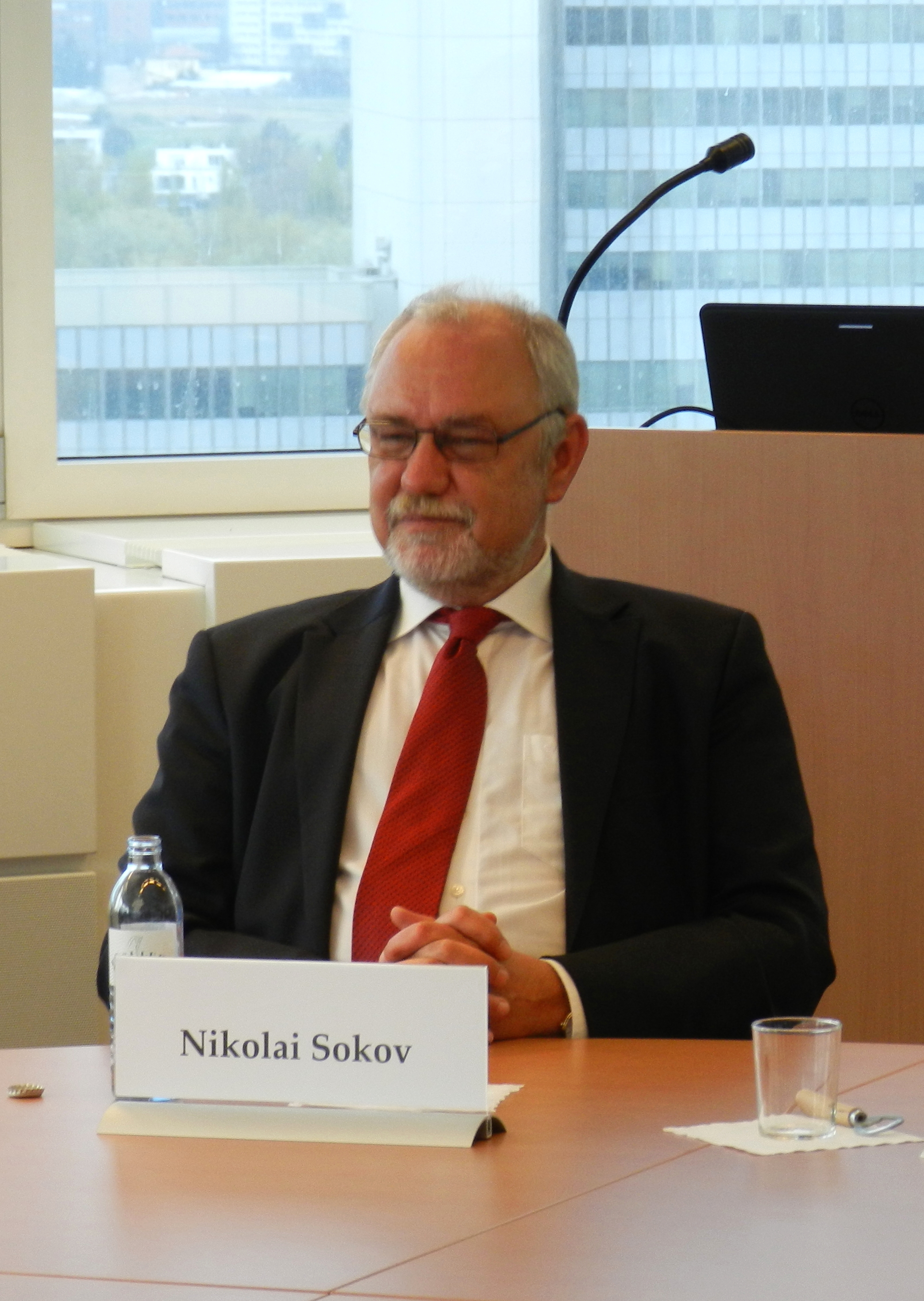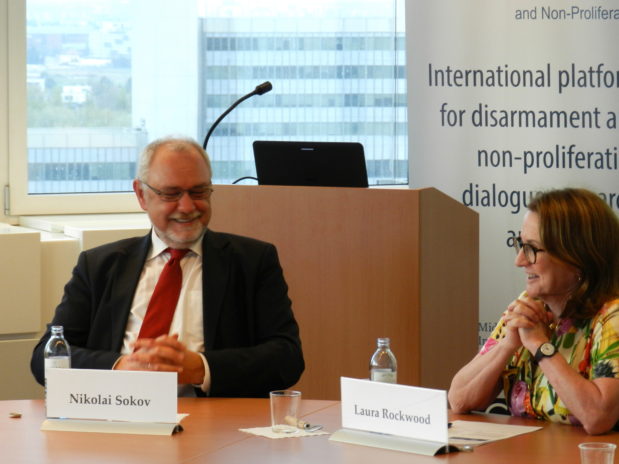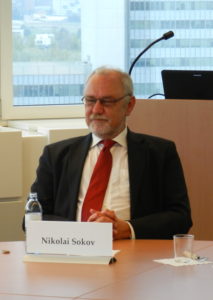
On 16 April 2018, the VCDNP held a seminar by Dr. Nikolai Sokov, Senior Fellow at the James Martin Center for Nonproliferation Studies at the Middlebury Institute of International Studies at Monterey, on “Advanced Conventional Weapons and the Changing Nature of International Security.” VCDNP Executive Director Laura Rockwood moderated the seminar.

At the outset of his presentation, Dr. Sokov highlighted that the mixture of nuclear and advanced conventional weapons in national security strategies today posed a triple challenge of dual (nuclear and conventional) capability of long-range delivery vehicles, high usability of conventional weapons and extremely short warning times. He noted that, throughout the Cold War, there had been a shared view that nuclear weapons should not be used because of their extremely destructive power. This made nuclear weapons a predominantly defensive instrument – they could only be used in response to an attack. Furthermore, warning time was long – about 20 to 30 minutes, long enough to assess circumstances, collect additional information and even contact the adversary. All long-range delivery vehicles carried nuclear warheads, so there could be no misunderstanding. This combination of features assured a reasonably stable relationship without large-scale conflict.
The advent of modern conventional weapons changed that situation. Unlike nuclear weapons, these are considered “usable”. The dual capability of long-range delivery vehicles introduces an element of uncertainty that could negatively affect the stability of mutual deterrence. That uncertainty can be illustrated by the differing perceptions of the deployment of Iskander tactical missiles in Kaliningrad Oblast – in the West, these are regarded as evidence of greater Russian reliance on nuclear weapons, whereas Russia construes them as part of a transition to conventional deterrence.
The advent of dual-capable hypersonic weapons, which is expected in the next several years (long-range versions will take longer) could undermine the entire set of principles that underpin strategic stability. Dr. Sokov underlined that the warning time will be reduced so dramatically that it would not allow for confirmation of an early warning signal or for contacting the other party: a response would be required on first signal of attack. Even worse, the deployment of hypersonic delivery systems in a ready-to-launch mode by one party might be regarded by the other as an impending attack and could trigger pre-emptive strikes. Dr. Sokov thus concluded that deterrence, whether conventional or nuclear, is becoming extremely fragile.
 According to Dr. Sokov, the world has entered a dangerous period. After the end of the Cold War, the United States was able to reduce reliance on nuclear weapons by transferring some missions to advanced conventional weapons. Now that Russia and China have caught up with the West in that category of weaponry, it is not impossible that the United States and NATO might choose to once again enhance the role of their nuclear capability. This dangerous situation is further aggravated by the deterioration of relationships between great powers and the continuing arms control stalemate.
According to Dr. Sokov, the world has entered a dangerous period. After the end of the Cold War, the United States was able to reduce reliance on nuclear weapons by transferring some missions to advanced conventional weapons. Now that Russia and China have caught up with the West in that category of weaponry, it is not impossible that the United States and NATO might choose to once again enhance the role of their nuclear capability. This dangerous situation is further aggravated by the deterioration of relationships between great powers and the continuing arms control stalemate.
Dr. Sokov concluded with an outline of possible approaches to arms control with respect to hypersonic delivery vehicles. He suggested, in particular: nuclear arms control switching from accounting for delivery vehicles to strict control of weapons, both deployed and non-deployed; the development of measures to differentiate between delivery vehicles with nuclear and conventional equipment (the former require tighter restrictions than the latter); individual verification measures for different categories of delivery vehicles (e.g., air-, sea- or land-based, ballistic and cruise missiles); and a set of confidence building measures to prevent a concentration of platforms with hypersonic delivery vehicles in a ready-to-launch mode.
Download the PowerPoint presentation here.
By continuing to use the site, you agree to the use of cookies. more information
The cookie settings on this website are set to "allow cookies" to give you the best browsing experience possible. If you continue to use this website without changing your cookie settings or you click "Accept" below then you are consenting to this.